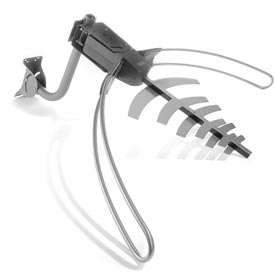 When you are considering the purchase of your HD TV antenna you whether may wish to keep your old metallic antenna or else be lured into switching to the cable or satellite system. Usually people complain of not getting good signals from outdoor antennas because the analog to digital signal conversion does not result in a better image. It is the same case as in the days of analog phones. Digital phones (land lines) and Mobile phones that receive signals from satellites and boosters give a much better voice reception. Similarly for getting the best picture HDTV antennas are recommended.
When you are considering the purchase of your HD TV antenna you whether may wish to keep your old metallic antenna or else be lured into switching to the cable or satellite system. Usually people complain of not getting good signals from outdoor antennas because the analog to digital signal conversion does not result in a better image. It is the same case as in the days of analog phones. Digital phones (land lines) and Mobile phones that receive signals from satellites and boosters give a much better voice reception. Similarly for getting the best picture HDTV antennas are recommended.
HDTV stands for High definition Television; they are actually terrestrial satellite dishes in digital format that give you high quality picture. Sometimes, people using analog antenna for watching TV get signals from HDTV installed nearby. They have a long range of like 60 miles. Some people still believe that a cable (or wire) is more reliable than an antenna. The stations however cannot send digital signals, like those for satellite and cable, hence analog antennas stand separate. Analog antennas were easily interrupted by environmental conditions while the HDTV now can deal with situations like a windy day, snow melt down or light storm. HDTV antennas have to be physically connected to a mast. Router-based HDTVs can detect signals from any nearby tower like a Wi-Fi device. Signals can be received from as far as 5-80 miles.
When you are out purchasing TV antenna selector for your HDTV, it is better to do some research. Word of the mouth, especially from neighbors is truly better than overblown advertisements that boast of crystal clear quality. Some claims may be right, but there might be geographical or other constraints in your area which may make an expensive purchase go waste. For the proper TV antenna selector you should keep the following things in mind.
* TV Antenna Range: Any TV antenna can make claims to its capability and price with respect to range in miles. This can be misleading at times. This is because in densely populated cities it may be difficult to get range as written originally on your HD TV, while in a flat terrain transmission, range can even exceed the written word.
* TV Stations: Not all TV stations are intrinsically alike, means if you go into a super mart and compare the reception of TVS, you may not only see difference in image quality of all TV sets, but you will also notice different image quality over competing channels (on a single TV set)
* Height of TV Antenna: The best compatibility between broadcast antenna and receiving antenna is ensured over a ‘line of sight’. This actually means that even if they are not visibly near to each other there are atleast less obstructions like hills or trees in between.
* Environment: It is queer but true that wind acts as a good transmitting medium for your TV antenna signals. Homes having tall buildings around get signal interference. A hill-mounted antenna however, will have less interference.










Comments